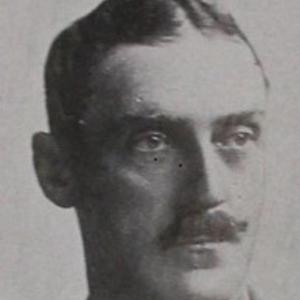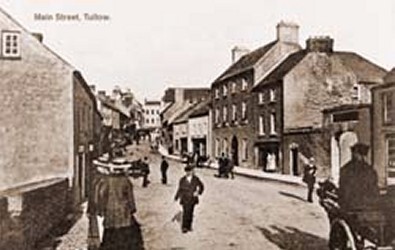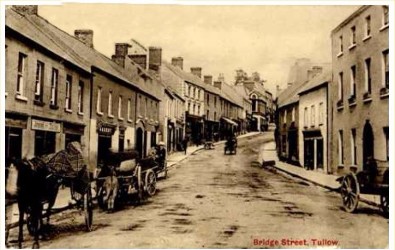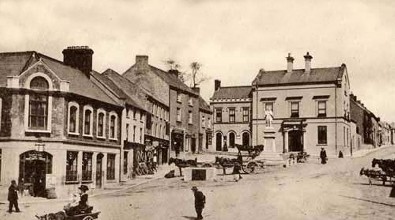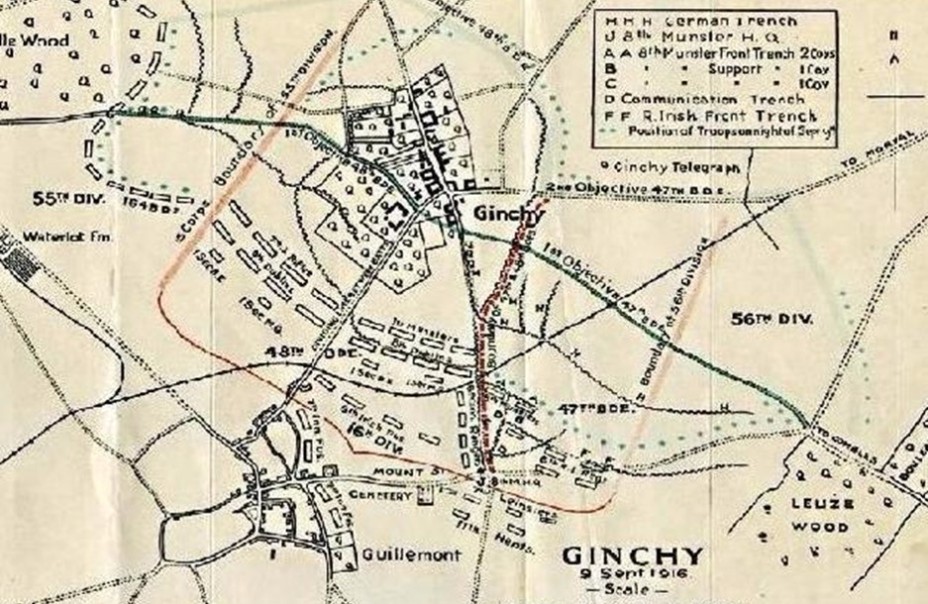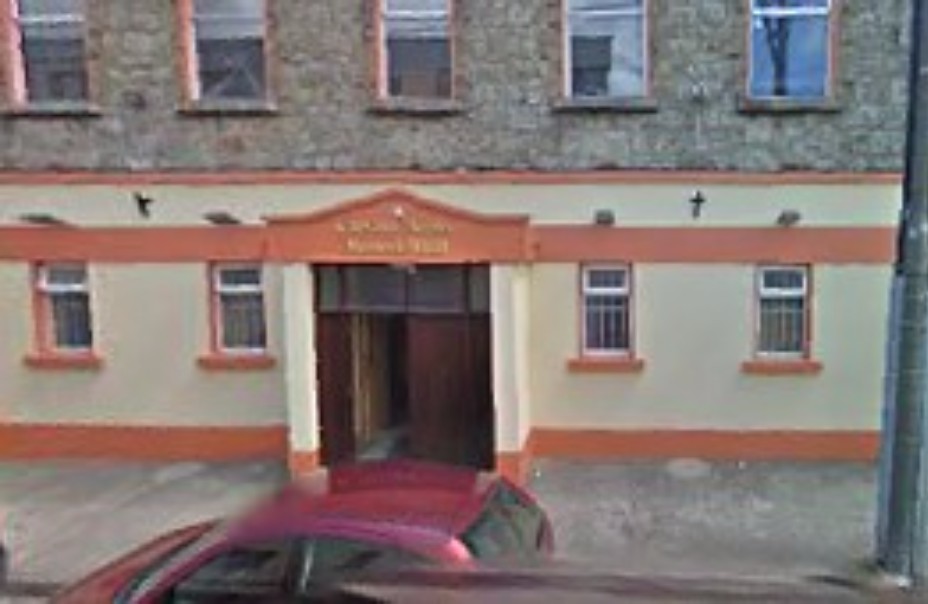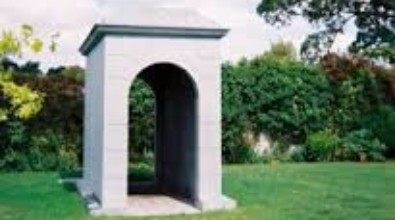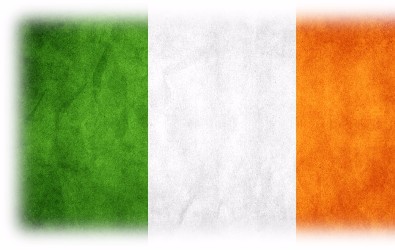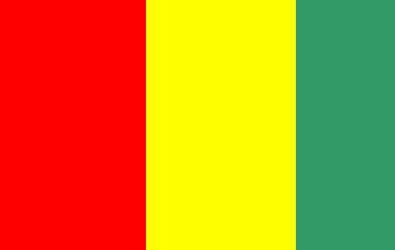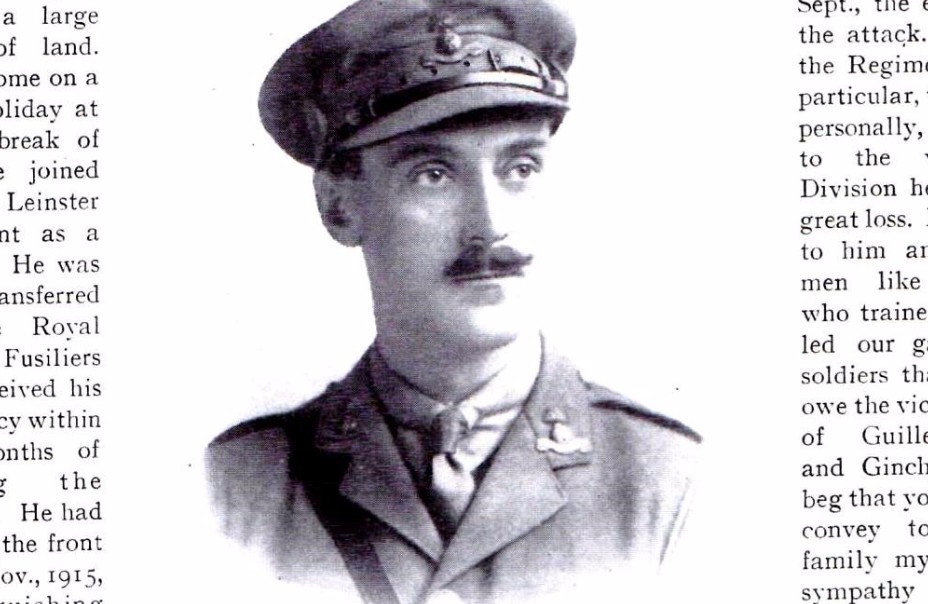Background.
My name is Kieran O' Mara, I'm 16 years old and a 5th year student at Presentation De La Salle College, Bagenalstown. History is one one of my favourite subjects at school along with Irish and Chemistry. I have a curious and inquisitively driven passion for history and discovering the past. I first heard about the 'Adopt a WWI soldier' project through Ms Maher, a teacher at my school. She encouraged everyone in our history class to enter the competition. I did so and was absolutely delighted when I found out I was representing Co. Carlow.
I feel that not enough is known about the people of Ireland who gave their lives so willingly for a cause that didn’t necessarily affect them. I am of the opinion that they are not acknowledged as they should be. Up until the centenary celebrations I have rarely seen much documented about the Irish war dead of World War One. I especially admire the fact that many of them went on the promise and hope of home rule when they returned among other reasons such as the German attack on 'little Belgium' - Catholic Belguim, others perhaps went to discover or in search of adventure and as an escape from the poverty in Ireland at the time . However while many never returned, those who did weren't treated in the way they were promised and the way they deserved with many of them ending up evicted from their family homes to be left with nothing.
Personally I always wanted to visit the place where these people are buried as two of my great grandfathers fought in the war. They did return but one was left extremely mentally challenged and was never the same after his experiences. It could easily have been them that were buried there perhaps they knew or fought beside the some of the people buried there. In a way they were lucky to come home alive but when they got home their quality of life wasn’t any better than it was before they left. After researching I found that approximately four hundred and eighty Carlovians were killed in the war. I really wanted to research into the topic more. I am proud to be representing Co Carlow on this historic trip.
my research
As soon as I received the name of my soldier I immediately set to work. The first thing I researched was the 1901 Census Returns. These proved to be very helpful in providing a basis for my research. It did raise a few questions too. At first I wasn't entirely sure if the Census had shown me the right family, but I clarified this as my research went further.
I then searched the Commonwealth War Graves Commission {C.W.G.C} from here I managed to download documents indicating where Captain Murphy is believed to be buried, the date of his death and his rank in the British army . I also searched other websites for information.
Records from the C.W.G.C stating place of burial for Capt. Murphy.
After this I contacted a local man from Tullow, Billy Wright, he is involved with the Captain Murphy Memorial Hall and Tullow Museum. He was very helpful in my search and provided me with loads of information as well as telling me about the painting of Captain Murphy in the Museum.
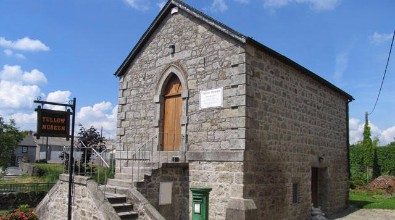
Tullow Museum, Bridge Street, Tullow
Once a Methodist Church, The museum features a splendid collection of artefacts reflecting local history, including what are alleged to be Fr John Murphy's last vestments
Opening times: Closed on Sat and Mon
Sun + Bank Holidays : 2p.m.-5p.m.
Other days: 2p.m.-4p.m.
Admission Free, Voluntary contributions welcome
For more information contact - 086-3416919 During opening hours OR 087-2383515 Anytime
Billy then put me in contact with another man, John O' Donovan, who happened to be writing an article for the Carloviana about William Joseph Murphy. The Carloviana is a historical journal published annually by the Carlow Historical and Archaeological Society . He was very helpful to me and always willing to answer any question he could that arose through my research.
I then contacted the archivist at Clongowes Wood College, unfortunatly they didn't keep the acedemic records of students but she did forward me his obituary from the 1917 Clongownian.
My experience
I thoroughly enjoyed the experience of researching my soldier William Joseph Murphy. It made me think deeper into the poignant period in history that is World War I. I found it really hard to believe that such devastation and destruction could stem from one man's actions. Such a waste of so many young lives, when you think about it: What was solved by the war? Absolutely nothing, all it brought was heartache to so many families. While thinking about the war and all those innocent young lives that were lost one song came into my mind constantly- It is 'The Green Fields of France' by Eric Bogle, I think that this truly is a fantastic song. Not only is it a nice song but when you listen to the words you cannot help be but moved. I love the song but the verse I particularly like is this one
"Young Willie McBride I can't help wonder why?
Do those that lie here know why did they die?
And did they believe when they answered the call?
Did they really believe that this war would end wars?"
I think that this verse show the innocence of the Irish soldiers and the fact that no matter what purpose they were fighting for, which most of them didn't actually know anyway, couldn't prevent any future conflicts.
The line "Or are you a stranger without even a name?" has particular significance to this project as many of the soldiers being researched for this project were forgotten soldiers whose stories have been brought to life again 100 years on.
The Green Fields of France- Eric Bogle
I urge anyone who hasn't listened to this song to have a listen. Don't just listen but take in the meanings of the words and think of all the Irish people who gave their lives so willingly in this war never to return to their home again
Another thing that came into my head while thinking about the project was the poem 'Base Details' by Seigfreid Sassoon {1886–1967}. Sassoon was a Jewish soldier and war poet. 'Base Details' deals with the unfairness of the way the army was organised and how the young innocent lives of soldiers were sent to the trenches while the majors and officers of higher rank sat back and gorged themselves on food, drink and comforts, not experiencing the horrors of trench life as did the young innocent soldiers.
"Base Details"
If I were fierce, and bald, and short of breath,
I'd live with scarlet Majors at the Base,
And speed glum heroes up the line to death.
You'd see me with my puffy petulant face,
Guzzling and gulping in the best hotel,
Reading the Roll of Honour. 'Poor young chap,'
I'd say - 'I used to know his father well;
Yes, we've lost heavily in this last scrap.'
And when the war is done and youth stone dead,
I'd toddle safely home and die - in bed.
By Seigfreid Sassoon
I cant help but wonder if these Majors and higher ranking officers who shot and punished soldiers because they were traumatised by the effects the war on them, often accusing the soldiers of being cowards, were they the real cowards? If Sassoon's description is anything to go by I would be of the opinion that they were
The Launch in Collins Barracks
The launch of the project was held in Collins Barracks Dublin on the 7th of March. It was really interesting to hear all the other stories and to meet all of the other students going on the trip
Waterford seminar
On the 20th of April the four students representing the south east counties Waterford,Wexford,Kilkenny and Carlow were invited by Niamh Crowly of the Waterford branch of the H.T.A.I. to present their presentations in Waterfords Medieval Museum. It too was a very interesting evening.
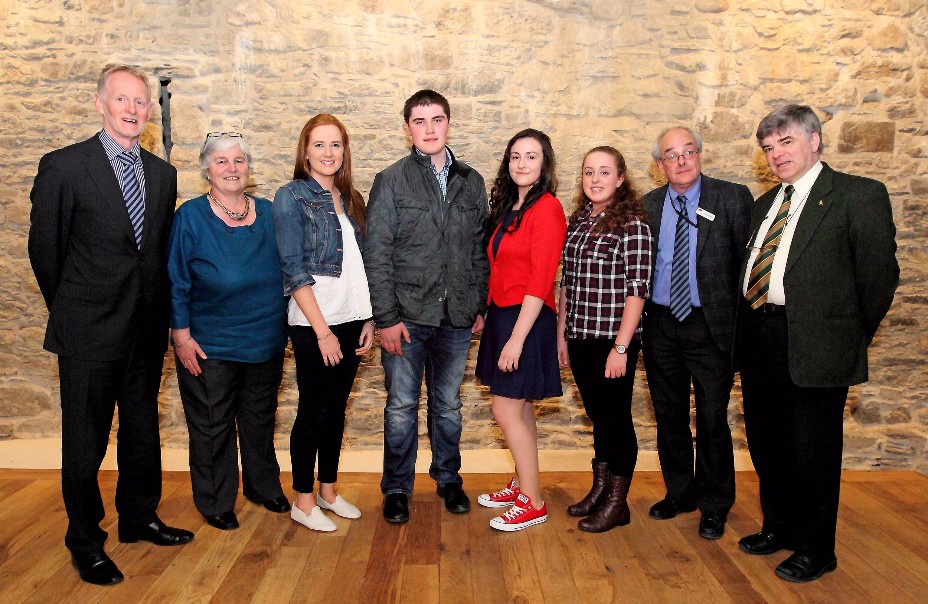
From Left to right: Eamonn McEneaney, Curator Waterford Museum, Niamh Crowley [HTAI Sec Waterford], Amy Mackey [Waterford], Kieran O'Mara [Carlow}, Béibhinn Breathnach [Kilkenny], Emily Boyne [Wexford], Donnchadh Ó Ceallacháin [Waterford Museum], Gerard [HTAI Chair Waterford] | Photograph courtesy of Noel Browne |
ACKNOWLEDGEMENTS.
I would like to thank everyone who helped me during my research for this project . Especially Billy Wright, John O' Donavan, Ms. Maher, Mr.Cummins and my family who have been very helpful through out the project.
I would also like to thank Gerry Moore and Niamh Crowley for the very interesting meetings in Collins Barracks and in Waterford's Medieval Museum.
